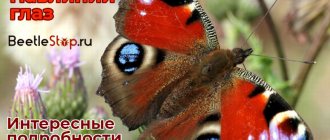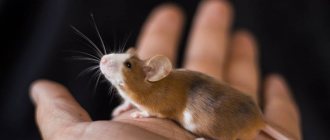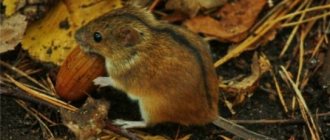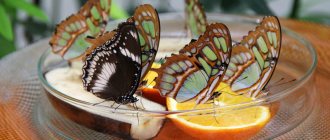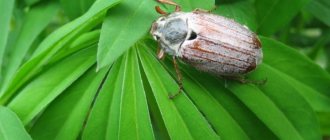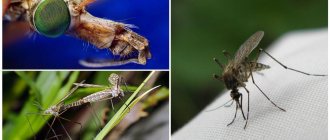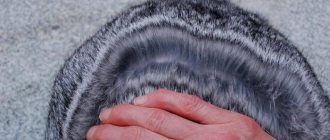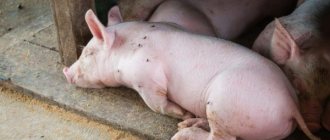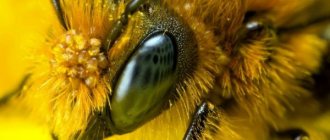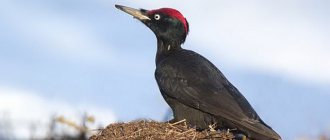To the question “What do butterflies eat?” one could answer briefly - nectar. They love the nectar produced by various beautiful flowers. Moreover, unlike many insects, butterflies distinguish the color red, which allows them to better navigate in search of food.
And in today’s article we will talk in detail about what butterflies eat at home and how they survive in the wild.
Honey “nectar” and rotten fruits
Even children know what these insects feed on in nature: pollen and nectar of flowers. However, the diet of butterflies is not limited to this; for example, many species happily drink the juices of rotten fruits. By the way, representatives of the sailfish family, as well as the usual nymphalids, need sodium vitally. Peacock's eye, admiral's eye or burdock can often be seen in summer sitting on moist clay soils or whitewashed trunks of fruit trees. Butterflies also love to land on sweaty people. These are the ways to get your own salt.
Therefore, there is nothing complicated about how to care for a butterfly and what to feed it. To prepare nectar at home you need 1/5 tsp. Dilute honey in 2 tsp. water. The mixture is prepared in a rosette, saucer or small jar lid. The insect is carefully taken across the abdomen and placed on the edge of the food container. A hungry butterfly will immediately straighten its proboscis and begin to suck in “nectar.” The meal can last from 2 to 15 minutes.
They also prepare food for the butterfly from overripe fruits. A piece of apple, pear, banana, mango, melon or watermelon pulp is kneaded in water to a liquid consistency. It is recommended to offer your pet food 2 times a day.
The task becomes more complicated, but becomes even more interesting if you want to see with your own eyes how a luxurious butterfly will be born from a not particularly attractive caterpillar.
By periods
Please note that the diet may vary at certain times of the year.
in winter
In winter, it is recommended to use honey nectar as feeding. To prepare it, you need to mix warm water and honey in proportions of 1:10. It is important to change the nutritional formula daily. As an alternative to honey, fruit baby puree is great.
In summer
In the hot season, you should pay attention to rotten vegetables or fruits, which are abundant in summer. Mangoes, bananas, watermelons, melons or apples are ideal. Before feeding, rinse thoroughly with water and peel.
Habitat
Moths are distributed almost everywhere; they cannot be found only in Antarctica. The ability of moths to fly is very developed, so they can be found both on the continent and on islands in the ocean.
Moths in central Russia are a fairly common phenomenon. They can be found even in the most abandoned places, traveling through the air on silk threads to which they are attached. In addition to this method of movement, caterpillars can move by attaching to broken branches of trees or whole logs that were moved from place to place after heavy rains or the flow of a river.
The following moths are known in the Moscow region:
- fine strands;
- bagworms;
- wood borers;
- cocoon worms;
- birch silkworms;
- slugs;
- peacock eyes;
- corydalis;
- moths;
- nolides.
Harm.
Caterpillars of moths are very voracious. They can damage leaves, stems and roots of plants, eat stored food products, and spoil various fibers and other materials. The larvae of many species of moths cause significant damage to agriculture.
The harm of keratophagous moths is well known to everyone. They lay eggs on wool and fur, which their larvae feed on. The fibers of these materials are also used by some species to build pupal cocoons.
Malicious pests are grain moth, or barley moth, Indian flour moth and mill moth, which destroy grain in warehouses. All three species are cosmopolitan, i.e. They are distributed almost all over the world, and to reduce the damage they cause, it is necessary to constantly treat with insecticides.
Caterpillars of many species belong to the so-called group. leaf miners (from the English miner - miner) - they feed on plant tissues deep in the leaf and for this they gnaw through long winding passages and extensive cavities under its epidermis. The larvae of other species make tunnels inside branches, roots and trunks, spending their entire immature life inside the host plant, which provides pests with reliable protection from parasites, predators and humans trying to fight them.
Probably the most noticeable type of damage caused by caterpillars to plants is defoliation, i.e. destruction of foliage. Hungry butterfly larvae can literally strip fields, vegetable gardens and even forests.
How to attract butterflies to your site and what to feed them
A variety of caterpillars inhabit trees and flowers, which are their food supply, so they must be taken along with the plant. The found caterpillar must be planted in a cage or jar, which is covered with a lid or gauze. Several holes must be made in the lid to facilitate the flow of fresh air.
After some time, the caterpillar turns into a pupa, on the body of which you can see the faint outlines of the body of the future butterfly. Butterfly breeders consider watching the birth process of a butterfly to be the most interesting and exciting activity. This process takes several hours and is like a real little miracle.
Plastic house for children in the country
The wings of a butterfly that has just been born resemble small rags hanging on a frame of veins. At this point, you must place a stick or twig in the jar or cage. If the butterfly cannot find suitable support, then its wings will straighten incorrectly and then it will no longer be able to fly fully.
We also recommend reading: Wooden bird feeder How to grow butterflies at home
Do-it-yourself rabbit hutches (10 photos)
Butterflies grown from caterpillars remain in the garden. To do this, you can plant special plants that attract such insects and form the main food supply for them.
How to make a net with your own hands
In spring and summer, it’s so great to spend the whole day in the fresh air, because at this time everything around is so pleasing to the eye: an abundance of greenery, flowers, butterflies. Speaking of butterflies! Who among us in our early childhood did not like to run after them with homemade nets? Imagine with what zeal and enthusiasm your child will do this. The only thing left is to make a net!
Of course, the easiest way to buy a net is in a store or market, but making it yourself will be much more interesting, especially since there is nothing complicated about it.
If you don’t know how to make a net with your own hands, we offer brief instructions:
You need to start by preparing the handle for the net. It is advisable to find a good quality wooden club (necessarily as smooth as possible), 2-3 cm thick. It must be cleaned of splinters.
Growing a butterfly from a caterpillar
A variety of caterpillars inhabit trees and flowers, which are their food supply, so they must be taken along with the plant. The found caterpillar must be planted in a cage or jar, which is covered with a lid or gauze. Several holes must be made in the lid to facilitate the flow of fresh air.
After some time, the caterpillar turns into a pupa, on the body of which you can see the faint outlines of the body of the future butterfly. Butterfly breeders consider watching the birth process of a butterfly to be the most interesting and exciting activity. This process takes several hours and is like a real little miracle.
The wings of a butterfly that has just been born resemble small rags hanging on a frame of veins. At this point, you must place a stick or twig in the jar or cage. If the butterfly cannot find suitable support, then its wings will straighten incorrectly and then it will no longer be able to fly fully.
Butterflies grown from caterpillars remain in the garden. To do this, you can plant special plants that attract such insects and form the main food supply for them.
Body structure
According to its structure, the butterfly is divided into two main parts:
- Body - consists of the head, chest and abdomen. The oral apparatus consists of a long proboscis, which folds to a small size. With its help, butterflies drink flower nectar. However, in some species, the mouthparts are gnawing. The head is decorated with two antennae and eyes. They are necessary for orientation in space and catching odors. The legs of the insect are located on the thoracic region. The abdomen looks like an elongated cylinder.
- Wings - there are two pairs of them (back and front). Usually the hind wings are smaller than the front wings. The span can reach 30 cm. The top layer consists of scales of various shapes. The pattern and coloring depends on the species, sexual characteristics and habitat. Many representatives of Lepidoptera have learned to use the coloration of their wings to camouflage themselves from predators.”
How to feed butterflies
The insects themselves cannot see and fly up to the treat. If the taste buds have not worked, then it is recommended to help them. Take a toothpick and slowly spin the proboscis with it, pointing it towards the food. There is no point in holding the butterfly. During feeding, you can see the proboscis moving more intensely. After the insect has eaten, it simply flies away.
To the question “What do butterflies eat?” one could answer briefly - nectar. They love the nectar produced by various beautiful flowers. Moreover, unlike many insects, butterflies distinguish the color red, which allows them to better navigate in search of food.
And in today’s article we will talk in detail about what butterflies eat at home and how they survive in the wild.
What do butterflies eat at home?
One of my friends has pet butterflies
. To be honest, I don’t understand what motivates his hobby, but he really cares a lot about his pets and even prepares special nectar
.
It consists of water, honey, sugar and fruit. Butterflies need to be fed once a day.
As far as I know, domestic butterflies can also be given rotten fruits, liquid honey and just sweet water.
Butterflies are interesting creatures to observe because there are still many aspects of their lives that no one has been able to explain.
One of the most beautiful types of insects is fluttering butterflies. There are all kinds of them: large ones with bright colors, small ones, pale ones, barely noticeable and nocturnal moths. There are a huge number of their varieties in the world, and some of them will be discussed in this article.
Life cycle
Lepidoptera are insects with a full cycle of transformation. The life cycle of a butterfly consists of 4 stages:
- egg;
- larva (caterpillar);
- chrysalis;
- adult insect (imago).
The duration of each cycle depends not only on the species of the insect, but also on climatic and weather conditions.
Egg
After mating, female butterflies lay eggs. Most lay eggs on the leaves or shoots of the food plant, but some lay eggs in the soil or on its surface.
Oviposition
The shape and shade of eggs can be very different. Oval, round, conical, cylindrical eggs are painted in white, sand, light green, pink, blue, brown. The embryo located in the egg is protected by a dense shell, and its development occurs due to nutrients.
The egg stage lasts from 7 – 15 days to several months (if the egg overwinters). Depending on the species, butterflies lay different numbers of eggs from several dozen to a thousand.
Caterpillar
At this stage, insects look like worms. They have a well-developed gnawing mouthpart, so immediately after hatching they begin to actively feed. Thanks to this, the development and growth of the butterfly larva occurs quite quickly. In addition, caterpillars store building substances necessary for subsequent transformation into a butterfly.
Caterpillars experience 4-5 molts, after each of which they increase in size. The larvae of some species molt up to 40 times. The development of a butterfly larva lasts from several weeks to several years.
What do caterpillars eat?
For the most part, the larvae eat plant food (leaves and young shoots, tree bark, inflorescences and fruits of plants), unlike adult lepidoptera, which feed on the nectar of flowers. But the diet of some caterpillars consists of foods such as:
- wood;
- lichens;
- mushrooms;
- skin, wool, hair, horny substances;
- wax;
- weakened and sick relatives;
- caterpillars of other species;
- scale insects;
- snails
During development, the caterpillar increases in size tens of times.
How long does the caterpillar stage last?
The duration of the caterpillar stage depends on the type of insect and the conditions in which it lives. From the moment the larva emerges from the egg until the start of pupation, it can take several days or several years.
Doll
Caterpillars have special glands that produce a strong, silky thread. When the larval phase is completed, the insect begins to secrete a thread and wrap itself in it, forming a cocoon. It is inside the cocoon that the amazing transformation of a caterpillar into a butterfly takes place.
The pupae are absolutely motionless and most often have a nondescript coloring, which saves them from attacks by birds and insect predators. The pupal stage lasts from 2-3 weeks to several months.
Imago
When the adult butterfly has finally formed, it secretes a caustic substance that corrodes the shell of the cocoon. Through the resulting hole, the insect climbs out. After this, the butterfly needs a few more hours for its wings to dry and become dense, after which the beauty takes off on its first flight in its life.
Birth of a butterfly
The lifespan of the imago varies from several hours to several months, but most often the butterfly lives for a couple of weeks.
Ways to protect yourself from enemies
The moths of Russia, and all others, are created by nature in such a way as to have protection from ill-wishers.
A list of defense mechanisms of moths is presented below.
Construction of shelters : different subspecies of moths organize similar protective structures for themselves. For example, caseworms and bagworms. The caterpillars of these moths, some time after hatching, build houses around which they attach pieces of foliage and various debris.
These shelters are designed in a special way so that the larva protrudes from them just enough so that in case of danger it can quickly hide inside . The house grows with its owner, at least until she grows up and becomes a pupa (this size is approximately 4-5 cm). After the allotted time, the butterflies come out, but only if we are talking about males. The females stay in these houses longer, until they are fertilized by the male and lay eggs.
Defensive body structures , including hairs and glands, are also defense mechanisms for moths. Do moths bite, having such a formidable weapon? The answer is obvious: only if necessary.
Many caterpillars have a series of bristles or hairs that can burn with poison hidden in the skin glands. During an attack, a dangerous mixture is sprayed from the tip of the bristles, which irritates the skin of the enemy.
In addition, insects use the following means of protection:
- glands in the larvae, with the help of which they cover their own bodies with a liquid that repels approaching predators;
- individual individuals begin to actively move when the enemy approaches, or pretend to be dead, or curl up into a tight ball;
- the larvae, at the moment of approaching danger, can fall from the branches on which they live, hanging on thin silk threads (the individual returns back along the same thread, slowly moving along it with its legs located on the chest and oral appendages);
- hawk moths have dorsal growths that look like horns, which they point towards approaching danger;
- insects can defend themselves with the help of long, prickly hairs covering their body.
The pupae of moths, so helpless in appearance, also have mechanisms to protect themselves from a sudden enemy attack:
- pupae living in the soil are colored in colors that make them invisible;
- moths weave silk cocoons (in the silkworm, such shelters can have up to three layers - loose, dense and filmy), in which they hide from attacks by predators.
Business ideas with butterflies
You can breed butterflies not only for entertainment, but also for business. There are several promising options for making money from these insects. The initial investment pays off in 2 weeks, and organizing an insectarium at home is easy even for a beginner.
Depending on your wishes, you can choose one direction of work or combine several:
- sell pupae and butterflies to other breeders;
- sell dried exotic specimens as souvenirs;
- organize exhibitions;
- rent out for photo shoots or weddings.
Butterflies feed on fruit nectar and do not require other food.
Sale of pupae for breeding
The first option for making money is selling pupae for breeding. Nowadays these insects are most often sold online. The breeder creates a website where he talks about his butterflies and offers to buy them. The average cost of a doll is 200 rubles, the standard batch size is 15 dolls. Having sold one batch, the owner of the insectarium will earn 3 thousand rubles.
You can also buy caterpillars for breeding butterflies online. The investment will pay off in the first weeks of operation. Consider the issue of delivering pupae by mail or courier service: packaging, speed, ventilation, insect safety.
Sale of live butterflies
A similar line of work is the sale of live butterflies. Considering the transience of the life cycle of these insects, for successful implementation you need to think carefully about marketing. How will buyers receive butterflies?
These insects are bought not only for home keeping, but also for events. For example, butterfly fireworks are popular. This is the name given to a box with several insects inside, which are ceremonially released at weddings and similar events. The cost of one fireworks is at least 2 thousand rubles. Reviews on the Internet about such services indicate their popularity.
Dried butterflies in a frame
Anyone can learn how to decorate frames with butterflies. Only accuracy and attentiveness are of fundamental importance. Phenol is commonly used to preserve insects. Among the necessary equipment, we note a glass desiccator (pan), a pin and planks for spreading the wings.
Butterfly exhibitions
The owner of an impressive collection of butterflies can make money by organizing an exhibition. These often take place in shopping centers and are popular with families with children. The exhibition requires several dozen insects of different species, preferably exotic, and an area of 20-30 sq.m.
Ticket price: 150–200 rubles. Shopping centers have very high traffic, so it is quite possible to attract up to 200 visitors in one day. The exhibition can be combined with the sale of dolls and live butterflies, souvenirs, fireworks and paid photography.
A framed butterfly is a popular souvenir that costs at least 450 rubles
Photo sessions with butterflies
The popularity of personal photo sessions has not decreased for several years. But there is a crisis of originality: photographers do not know what new to offer the audience. This is an opportunity for a butterfly breeder to make money: rare insects can be rented out. The approximate price for renting copies for photography per hour is 500-700 rubles. This way you can freely earn several thousand a week. The line of work is easily combined with the sale of butterflies and fireworks, souvenirs and exhibitions.
The owner of the insectarium must only think about the delivery of insects to the photo shoot location. It’s easy to find clients through social networks - all photographers have work accounts there.
Content nuances
We’ve figured out what butterflies eat, now let’s talk about how to keep this exotic insect at home.
First, she needs a home. It should not fly freely around the apartment, so you will have to equip or purchase a special insectarium.
Secondly, it is necessary to maintain a suitable microclimate. They love warmth and at any sign of cold they immediately hibernate. The optimal temperature for their existence is 23-28 degrees Celsius.
We recommend reading: “What do lizards eat”
Thirdly, the level of humidity is no less important. In dry air the butterfly will die very quickly
To increase humidity, spray the apartment or insectarium with water from a spray bottle. Don't be afraid if droplets get on an insect. It's even useful. This procedure should be carried out 1-2 times a day.
Fourthly, they pay special attention to their sleeping place. If you don’t have an insectarium and they just live in an apartment, then most likely the insects will spend the night on curtains or on indoor plants
If pets live in an insectarium, then you will need to build a resting place for them.
Twigs are perfect. They need to be laid out so that the butterfly can sit down comfortably (they sleep while sitting).
Use of the drug in folk medicine
Tincture of wax moth larvae
Due to the fact that drugs produced by the pharmaceutical industry have side effects on the body, science has turned to the search for alternative solutions in the field of medicine and biology. A traditional medicine is being studied - an alcohol infusion of bee moth larvae. It was found that taking the tincture is indicated for:
- treatment to prevent viral, inflammatory and colds (lysine, riboflavin);
- pathologies of the nervous system (stroke, Alzheimer's disease, neuritis, paralysis, dementia, cerebral hernia, etc.);
- diseases of the heart and blood vessels (myocardial infarction, hypertension, coronary heart disease, cardiomyopathy, angina, etc.);
- diseases of the respiratory system (pneumonia, pleurisy, asthma, tuberculosis, tracheitis, bronchitis, etc.);
- liver diseases (jaundice, hepatitis, cirrhosis, etc.);
- diseases of the pancreas (cancer, diabetes, pancreatitis);
- pathologies of the vascular system (varicose veins, thrombophlebitis, obliterating endarteritis);
- joint diseases (arthrosis, arthritis, bursitis);
- skin diseases (rosacea, eczema, trophic ulcers, demodicosis, skin cancer);
- gynecological pathologies (adnexitis, anemia, infertility, placental insufficiency, etc.).
Wax moth extract is used in gerontology as a means of rejuvenation that can reduce the manifestation of age-related dystrophic and degenerative changes in the human body. Crushed dried wax moth larvae and tincture of them are used in cosmetology as a natural peeling and biostimulant for skin and hair. Wax moth is included in some anti-aging cosmetics.
Serine protease is an enzyme contained in wax moth larvae that helps reduce keloid scars and restores the structure of any tissue. The use of wax moth tincture for the treatment of purulent wounds and abscesses, ulcers and the healing of postoperative sutures is based on these properties of the tincture and prevents the formation of scars. Serine protease restores heart muscle after a heart attack, brain tissue after a stroke and traumatic brain injury, prevents the formation of adhesions and fibrous degeneration of lung tissue after pneumonia, pleurisy. The enzyme helps reduce cavities in tuberculosis.
Wax moth is used to prepare athletes for competitions and restore the body after physical overload. The tincture is indicated after a serious illness, for people engaged in mental and physical labor, for the elderly and for children as an adaptogenic, anabolic, anti-stress, immunomodulatory, tonic and restorative agent.
Wax moth extract relieves toxicosis in the first trimester of gestation.
Tincture of wax moth larvae
Amino acids in the composition of the medicine can protect the body from toxins and the effects of ionizing radiation and radiation.
Those who take the drug of bee moth larvae note improved memory, increased ability to work and endurance.
The benefits of wax moth larvae extract for a child’s growing body have been proven. The medicine promotes growth, mineralization of bone tissue, and increases the body's defenses. In pediatrics, the tincture is used to treat the consequences of birth injuries and anomalies of intrauterine development of the fetus.
In cardiology, wax moth tincture is used to protect the myocardium from the toxic effects of cardiac medications.
An alcoholic tincture of larvae is used in the treatment of tuberculosis. Enzymes that are involved in the digestion of wax are capable of dissolving the protective shell of Koch's bacillus, as a result of which it dies from the action of antibiotics and cells of the immune system.
The benefit of wax moth in andrology is that the drug is used to increase potency, libido and treat male infertility. In urology, the drug is of great benefit in the treatment of benign prostate hyperplasia.
Butterfly: description and photo. The structure and appearance of butterflies
The structure of the butterfly has two main sections: the body, protected by a hard chitinous shell, and the wings.
A butterfly is an insect whose body consists of:
Head, inactively connected to the chest. The butterfly's head has a round shape with a slightly flattened occipital part. The round or oval convex eyes of the butterfly in the form of hemispheres, occupying most of the lateral surface of the head, have a complex facet structure. Butterflies have color vision and perceive moving objects better than stationary ones. In many species, additional simple parietal eyes are located behind the antennae. The structure of the oral apparatus depends on the species and can be of the sucking or gnawing type.
- Breasts with a three-segment structure. The front part is significantly smaller than the middle and back part, where three pairs of legs are located, which have a structure characteristic of insects. On the shins of the butterfly's front legs there are spurs designed to maintain the hygiene of the antennae.
- The abdomen has the shape of an elongated cylinder, consisting of ten ring-shaped segments with spiracles located on them.
Butterfly structure
The antennae of the butterfly are located on the border of the parietal and frontal parts of the head. They help butterflies navigate their surroundings by sensing air vibrations and various odors.
The length and structure of the antennae depend on the species.
Two pairs of butterfly wings, covered with flat scales of different shapes, have a membranous structure and are penetrated by transverse and longitudinal veins. The size of the hind wings can be the same as the front wings or significantly smaller than them. The pattern of butterfly wings varies from species to species and captivates with its beauty.
In macro photography, the scales on the wings of butterflies are very clearly visible - they can have completely different shapes and colors.
Butterfly wings – macro photography
The appearance and color of the butterfly’s wings serve not only for intraspecific sexual recognition, but also act as protective camouflage, allowing it to blend into its surroundings. Therefore, colors can be either monochrome or variegated with a complex pattern.
The size of a butterfly, or better said, the wingspan of a butterfly, can range from 2 mm to 31 cm.
Total number
The order Lepidoptera undoubtedly stands out among taxa of a similar rank in terms of species diversity. Lepidoptera are one of the largest groups of insects, including, as of August 2013, 158,570 species, including 147 fossil taxa. It is estimated that up to 100,000 species remain still unknown to science and, thus, the total number of lepidopteran species existing on the planet can be estimated at approximately 200,000 - 225,000 species. There are 2,166 genera and 8,879 species found in Russia.
Lepidoptera are very diverse, and most of their species are poorly studied. Some of the described species are known from finds from a single locality or even from a single specimen. A true estimate of the total number of species in existence will never be known because many species became extinct before they were discovered. The taxonomy of butterflies presented in various works reflects the different views of their authors and is, without a doubt, debatable.
There are disputes regarding the systematic position or the need to maintain the status of certain subspecies or species. DNA studies suggest that some of the currently known species must be separated. A well-known example is where the seemingly identical Colias alfacariensis and Colias hyale, previously thought to be one species, were split into two after significant differences in the structure of their caterpillars and pupae were discovered.

